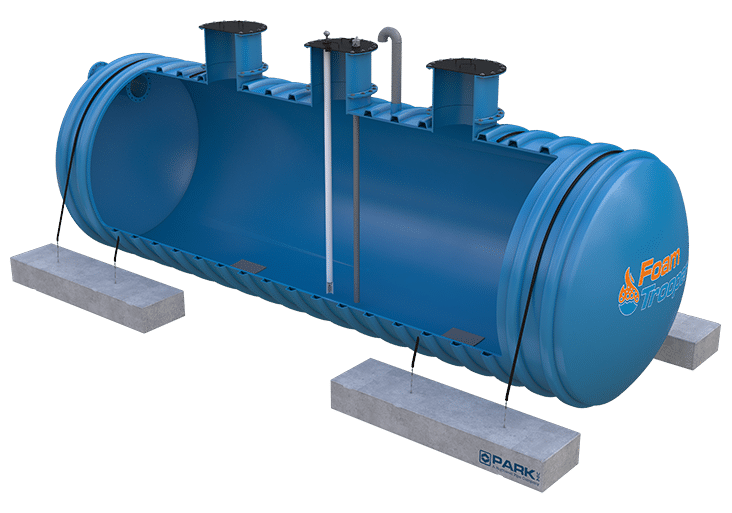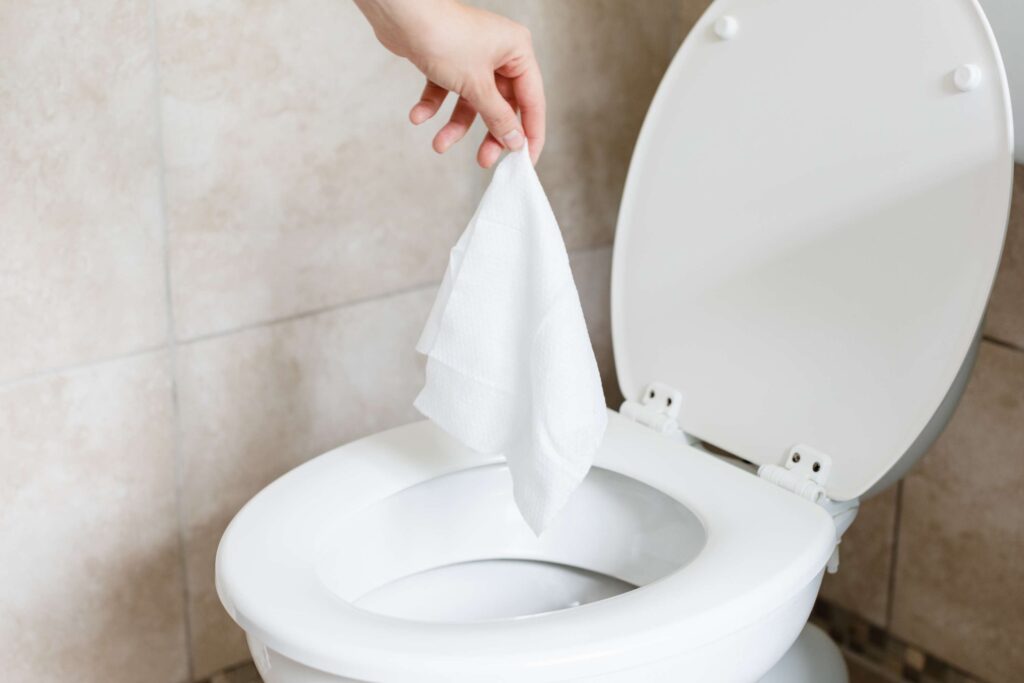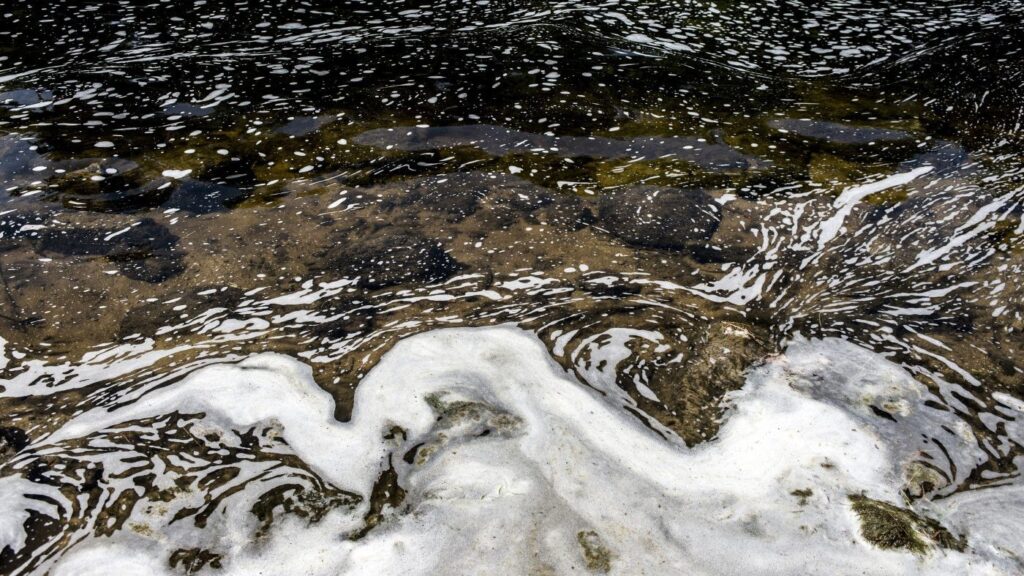Aqueous Fire Fighting Foam (AFFF) is a synthetic fire fighting foam consisting of combinations of fluorochemical and hydrocarbon surfactants combined with high boiling point solvents and water. The surfactants alter the surface properties of water in such a way that a thin aqueous film can spread on a hydrocarbon fuel even though the aqueous film is more dense than the fuel. AFFF Systems have superior fire extinguishing capability of flammable or combustible liquids, especially jet fuel spills.
Where is the AFFF Used?
AFFF fire suppression systems are typically provided in aircraft hangars. This type of protection is necessary to protect valuable, mission-essential aircraft and hangar facilities. The obstacles to fire suppression in hangars include suppressing fuel fires under wing shadows and rotary-wing aircraft and still protecting the aircraft and its sensitive electronics. AFFF high-expansion foam is effective when discharged overhead. Suppressant foam hits the top of the aircraft and the floor, then flows in a blanket below wing shadows.
Are there disposal concerns of AFFF?
A concern of AFFF systems is the discharge of AFFF foam solution. In large volumes, AFFF foam can be harmful to the environment. AFFF solution should not be allowed to flow untreated into the ecosystem, or into the sewage systems in large quantities. In the event of a fire, the fire suppression system will activate. However, a fire is a very rare event. The primary concern is discharge from unwanted activations and from periodic testing.
Should AFFF be released into the environment?
AFFF should not be released untreated to the environment. Here is why:
Short Term Consequences
Large volumes of AFFF discharge can negatively impact the environment, as well as produce bad side effects, such as foaming. Because AFFF is biodegradable, the breakdown of AFFF by bacteria consumes oxygen. AFFF can deprive aquatic life of oxygen and cause fish kills.
Long Term Consequences
Fluorochemical surfactants (also referred to as fluorosurfactants) are essential ingredients in AFFF concentrate. No other known class of materials has the capability of producing aqueous solutions of sufficiently low surface tension to permit the formation of an aqueous film on hydrocarbon fuels. This low surface tension allows the aqueous film to spread over and seal the surface of the fuel, extinguishing the flames and preventing the flammable liquids from evaporating. No other type of surfactant can do this as effectively as a fluorosurfactants. Fire fighting agents containing fluorosurfactants can extinguish flammable liquid fires more quickly using lesser amounts of agent than fire fighting agents not containing fluorosurfactants. A drawback to fluorosurfactants is that they move with water in aquatic systems and leach through soil. Whereas a readily degradable compound will break down as it leaches through soil, the degradation products of fluorosurfactants will not. If allowed to soak into the ground, fluorosurfactants may eventually reach groundwater or flow out of the ground into surface water and cause foaming and other undesirable effects.
Should AFFF be released into the sanitary sewer?
Once the foam-water solution has been contained, the most common method of disposal is to treat it biologically in a wastewater treatment plant (WWTP). The AFFF should be dosed through an oil-water separator and then discharged to a sanitary sewer. A WWTP should be contacted prior to discharge. In most cases it will require a Material Safety Data Sheet for the foam concentrate (contains information on composition, BOD, aquatic toxicity), an estimate of the total volume of foam-water solution to be discharged, and the anticipated timing of the discharge. The WWTP may require foam-water solution to be diluted in advance. The US National Fire Protection Association (NFPA) recommends that the concentration of any foam-water solution in the total volume of WWTP influent should not exceed 1700 parts per million (ppm).
For example, foam-water solution could be discharged at the rate of 7 gallons per minute (gpm) to a 6 million gallon per day WWTP. The difficulties of metering such a low rate of discharge can be overcome by diluting the foam-water solution by 10 or 20 to 1, permitting discharge rates of 70 or 140 gpm respectively.
Who can provide a AFFF Wastewater Treatment System?
ParkUSA® manufactures a wastewater treatment system that specifically targets AFFF discharge. ParkUSA® has many years of experience with airport Infrastructure hangers. The ParkUSA® system includes all necessary components from drain to sewer. Here are the components of the ParkUSA® AF3 System.
The AF3 Containment System consists of:
A. Trench Drain
B. Diverter Valve
C. Oil-Water Separator
D. Sample Well
E. AFFF Containment Tank
F. AFFF Containment Controls
How does it work?
The floor drain system is located in the area protected by fire suppression system, usually a hanger or helipad. The flooring is sloped to the floor drains or trench drain. All fluids that hit the hanger floor, drain in to the trench drain. Piping connects the trench drain to the automatic diverter valve. The diverter valve assembly has one incoming pipe and two exiting pipes; one directed to the sanitary sewer (normal condition), and another pipe directed to the AFFF containment tank or pond (alarm condition). The diverter valve system can include an automatic control system that will allow the central fire alarm system to activate the diverter valve. The control system will provide valve position status and automatic and manual control.
Normal Condition
Under normal conditions, the flow from spillage and floor wash-down is directed to the oil-water separator. In the separator, all solids and hydrocarbons are separated and retained. The treated effluent flows out of the separator and then through the sample well. The sample well provides an access area to visually inspect and take grab samples of the wastewater effluent. The discharged wastewater is then piped to the sanitary sewer.
Suppression System Activation Condition
Upon the activation of the fire suppression system, a signal is sent to the AF3 management panel. The diverter valve changes position and diverts wastewater flow from the oil-water separator, to the containment tank where all the fluids are detained.
After-Activation Condition
The AFFF containment tank is eventually emptied by a liquid waste disposal company or can be emptied by managed dosing (pumped at a low flow rate). The dosed flow is directed to the oil-water separator where solids and hydrocarbons are separated and retained. The treated effluent is discharged to the sanitary sewer.
Our Responsibility
ParkUSA® believes in water technology development to combine efficiency and environmentally friendly products. ParkUSA’s goal is to offer its customers sustainable green solutions that meet todays needs, as well as anticipated changes in regulations.
Contact us for more information and design assistance.
Public Resources
An Incinerator Burning Firefighting Foam May Be Covering a New York Town in Toxic Chemicals






